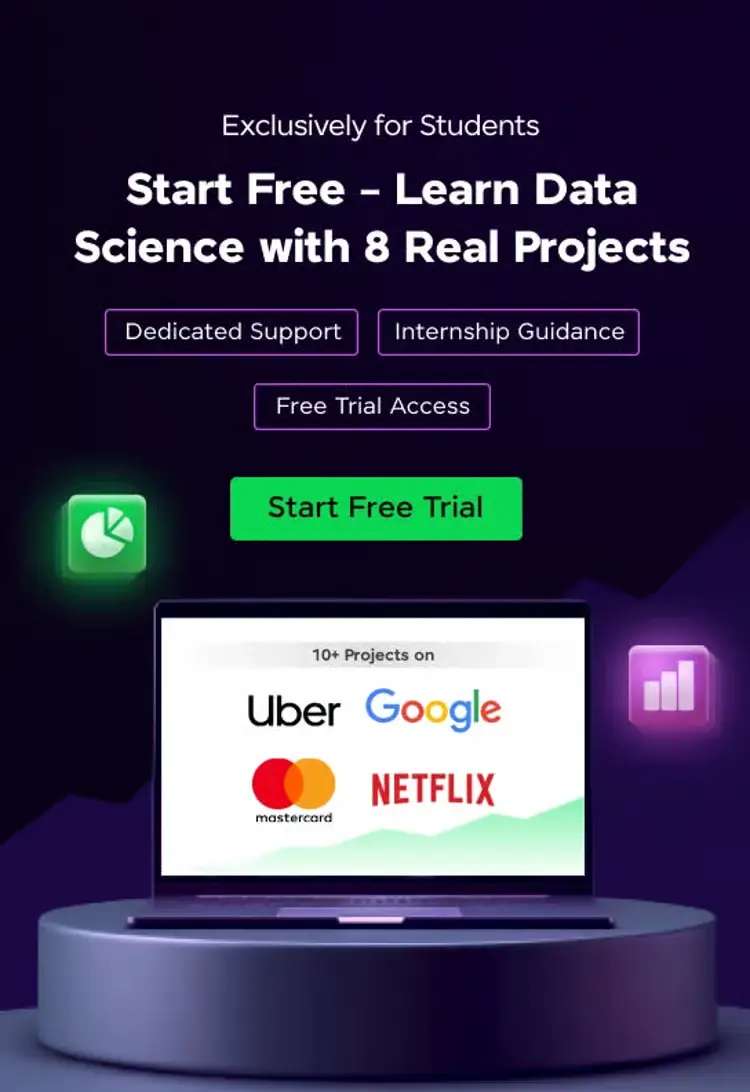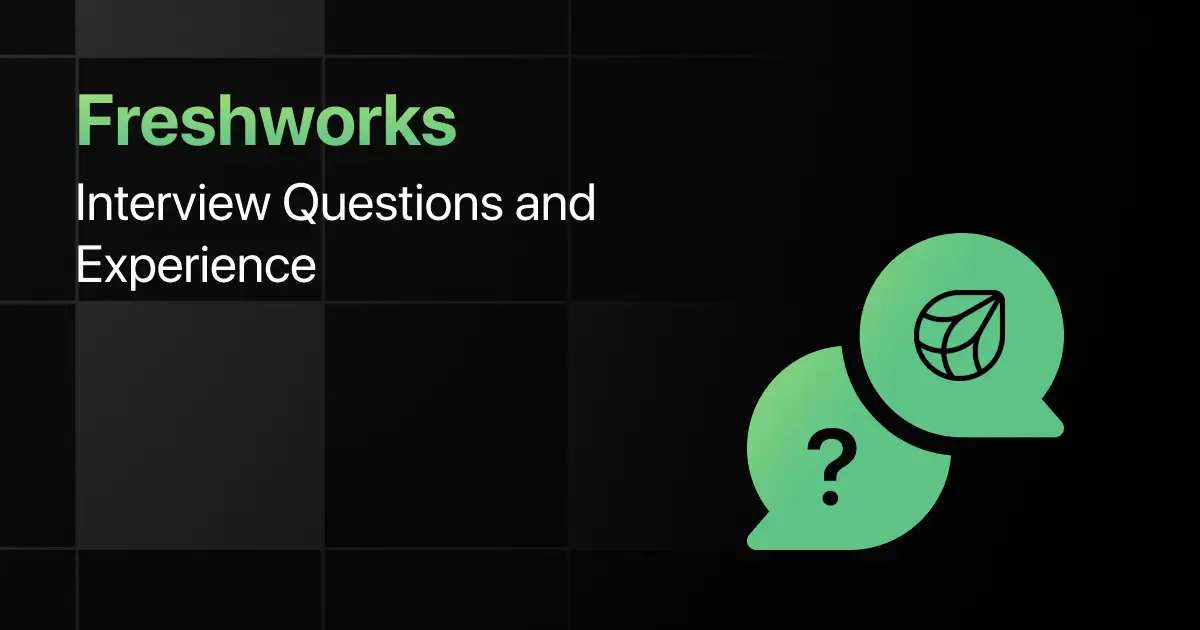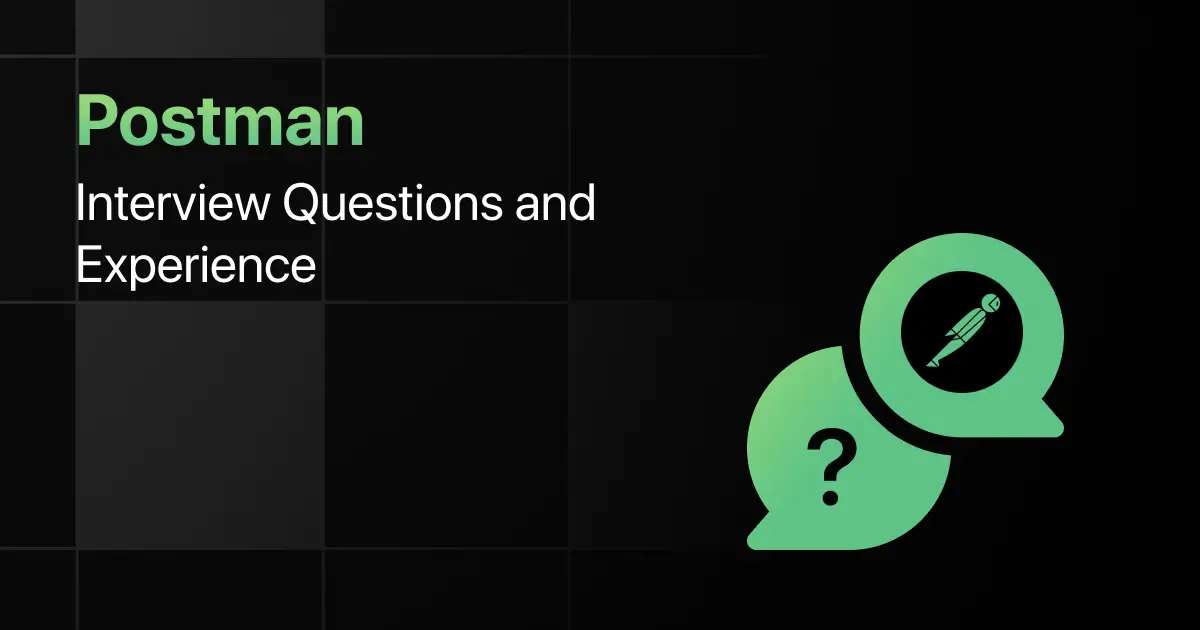Google Interview Questions and Experience
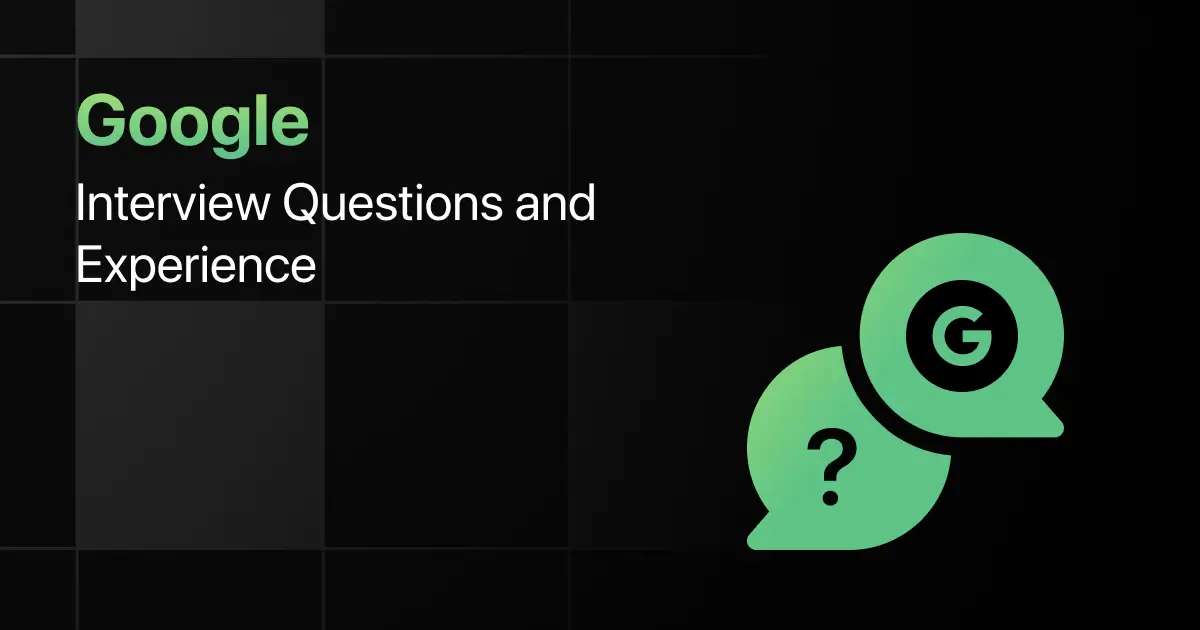
Have you ever imagined what it takes to succeed in a Google interview? Known for its tough selection process, Google looks for strong problem-solving and coding skills.
Candidates are tested on data structures, algorithms, system design, and Googleyness — their cultural fit. The process can feel intense without structured preparation.
In this blog, you will learn about Google’s hiring process, top interview questions, real candidate experiences, and useful preparation tips to boost your chances.
Google Hiring Process – Overview
Here’s a quick overview of Google’s hiring process:
| Category | Details |
|---|---|
| Eligibility | Open to both freshers and experienced candidates. Preferred degrees: B.E/B.Tech, M.E/M.Tech, MS in CS, IT, or related technical fields. |
| Rounds | Typically 5–7 rounds: Online assessment → Phone/virtual screens (2) → Onsite interviews (3–4 technical + 1 behavioral) → Hiring committee. |
| Job Roles Offered | Software Engineer, Site Reliability Engineer (SRE), Product Manager, Data Scientist, Cloud Engineer, Research Scientist. |
| Salary Range | Freshers: ₹25 – 35 LPA (India, Software Engineer Level 3). Experienced: ₹45 – 80+ LPA depending on level and role. (Glassdoor, AmbitionBox) |
| Apply Link | Apply Now |
Top Google Interview Questions
Google interviews focus heavily on data structures, algorithms, and problem-solving. You can also expect questions on system design, coding efficiency, and scalability.
1. Technical Questions
- Explain the difference between DFS and BFS. When would you use each?
DFS explores depth first, useful for pathfinding or backtracking. BFS explores breadth first, useful for shortest path in unweighted graphs. - How do you detect if a binary tree is balanced?
Check height difference between left and right subtrees recursively. A difference greater than one indicates imbalance. - What is dynamic programming? Give an example.
Dynamic programming solves problems by breaking them into overlapping subproblems. Example: computing Fibonacci numbers using memoization. - Write an algorithm to find the kth largest element in an array.
Use a min-heap of size k or Quickselect algorithm. Complexity is O(n log k) or average O(n). - How do you design a URL shortening service like bit.ly?
Discuss hashing, base62 encoding, database design, scalability, caching, and handling collisions. - Explain how hash tables work.
They store key-value pairs using a hash function. Collisions are resolved using chaining or open addressing. - What is the difference between process and thread?
A process is an independent program. A thread is a lightweight unit within a process that shares memory. - How do you find the lowest common ancestor of two nodes in a binary tree?
Traverse recursively. If one node lies in left and another in right subtree, root is LCA. - What is Big-O notation? Why is it important?
Big-O measures time/space complexity growth. It helps evaluate algorithm efficiency independent of hardware. - How do you detect and remove a cycle in a linked list?
Use Floyd’s cycle detection to find a loop. To remove, find cycle start and set previous node’s next pointer to null. - How would you design Google Search autocomplete?
Use a Trie data structure with frequency counts, ranking algorithms, caching, and distributed indexing for scalability. - Explain MapReduce.
MapReduce splits tasks into smaller map and reduce functions, enabling distributed processing of large datasets across clusters. - What is memoization? How does it differ from caching?
Memoization stores results of function calls. Caching stores general frequently used data. Memoization is function-specific caching. - How do you test if a number is a power of two?
Use bit manipulation: (n > 0) && ((n & (n-1)) == 0).
2. Role-Based Questions
For Freshers
- Can you explain a project you worked on and the technologies you used?
In my final-year project, I built a web application using React for the frontend, Node.js for the backend, and MySQL for the database. It showcased my skills in full-stack development and teamwork. - How do you approach solving a completely new problem that you haven’t seen before?
I break the problem into smaller parts, map it to similar concepts I already know, try a brute-force solution first, and then work on optimizing it. - How do you manage your time when you have multiple assignments or deadlines?
I prioritize tasks by urgency and importance, set clear milestones, and use tools like Trello or Google Calendar to track progress. - Give an example of when you had to quickly adapt to a new technology.
During my internship, I was asked to work with Docker, though I had never used it before. I learned the basics in a week through tutorials and applied them to containerize our application successfully.
For Software Developers
- How do you handle memory leaks in Java?
By identifying unreferenced objects, using tools like VisualVM, and ensuring proper closing of resources such as streams. - How would you design a scalable chat application?
Use WebSockets for real-time communication, distributed databases, load balancers, and caching to handle millions of concurrent users. - Explain CAP theorem in distributed systems.
CAP states a distributed system can only guarantee two of three: Consistency, Availability, Partition tolerance.
For Data Analysts / Data Scientists
- How would you analyze user behavior data for Google Ads?
Use SQL queries, statistical analysis, and visualization tools. Identify patterns that improve click-through rate and ROI. - What is A/B testing and why is it important?
A/B testing compares two versions of a product/feature to measure user impact, helping make data-driven decisions. - How do you handle missing data in a dataset?
Use imputation (mean/median/mode), predictive models, or remove missing entries depending on data importance.
For Site Reliability Engineers (SREs)
- How do you monitor the health of a distributed system?
Set up metrics, logging, tracing, and alerts using tools like Prometheus, Grafana, or Google Stackdriver. - What is the difference between horizontal and vertical scaling?
Horizontal scaling adds more machines. Vertical scaling increases resources of a single machine. - How do you handle an incident when a critical Google service goes down?
Follow incident management protocols: detect quickly, mitigate impact, communicate status, identify root cause, and implement postmortems to prevent recurrence.
For Managers / Leads
- How do you ensure your team delivers projects on time?
Set clear goals, use agile methodology, track progress, and maintain open communication with stakeholders. - How do you resolve conflicts within your team?
Encourage open discussion, listen to both sides, and guide towards a solution aligned with project goals. - How do you measure success in a software project?
By meeting requirements, ensuring quality, achieving performance metrics, and delivering value to end users.
3. Behavioral Questions
- Tell me about a time when you had to solve a problem with limited resources.
I prioritized core tasks, used available tools creatively, and collaborated with teammates to deliver a working solution within constraints. - How do you handle disagreements in a technical discussion?
I listen carefully, present my reasoning with data, and aim for consensus. If unresolved, I defer to team leads respectfully. - Describe a situation where you showed leadership without a formal title.
I guided peers during a coding project by dividing tasks, setting deadlines, and helping debug issues, ensuring smooth delivery. - Google values “Googleyness.” How would you demonstrate it?
By showing curiosity, adaptability, teamwork, and a focus on making an impact while staying humble and collaborative. - How do you manage your time when working on multiple projects?
I prioritize based on deadlines and impact, break tasks into smaller goals, and track progress with regular updates. - Tell me about a failure and what you learned from it.
I once underestimated a project timeline. It taught me to plan buffers, communicate risks early, and ask for help when needed. - How do you ensure effective communication in cross-functional teams?
I use simple language, align everyone with shared goals, and maintain transparency through regular stand-ups and documentation.
Google Interview Experiences
1. L3 Software Engineer role Experience (Fresher)
This interview experience is from Shalini Negi, who interviewed for an L3 Software Engineer role with Google India. The process covered four onsite rounds, an extra technical round, Googleyness, and team matching over several weeks.
Candidate Background
Fresher tag with prior industry experience. B.Tech, Army Institute of Technology, Pune. Strong competitive programming practice on LeetCode, Codeforces, and GFG.
Interview Process They Faced
- Onsites Planned: Three coding rounds and one Googleyness round on consecutive days.
- Feedback Driven: Recruiter shared feedback after each round.
- Extra Technical Round: Added due to one weak coding round.
- Googleyness Round: Behavioral and values.
- Team Matching: Discussions with managers to align interests and role fit.
Questions Asked
- Coding Round 1: DP on trees.
- Coding Round 2: Graphs, medium level.
- Coding Round 3: Two questions on trees and connected components; mixed performance.
- Extra Technical: One medium and one hard; coded medium fully, discussed hard approach.
- Topics across rounds: Trees, graphs, connected components, dynamic programming, complexity analysis, code clarity, test cases.
- Googleyness: Behavioral scenarios using STAR.
Outcome & Difficulty Level
Selected, then matched with a team and received offer. Difficulty: Moderate to Hard. Emphasis on DS and Algo depth, clear communication, and steady feedback improvements.
2. Software Engineer role Interview Experience (Experienced)
This interview experience is from Kesar Shrivastava, who interviewed for a Software Engineer role with Google. The process spanned multiple months with a pre-screen earlier, two mock interviews, three onsites, Googleyness, team matching, and one additional onsite.
Candidate Background
Experienced software engineer. Prior pre-screen in December 2023. Focused prep on Google tagged problems, tries, graphs, dynamic programming. Practiced with timing and hard problems.
Interview Process They Faced
- Pre-Screen (Dec 2023): 45 minutes DSA, greedy based, cleared.
- Mock Interviews: Two mocks in March and April to calibrate readiness.
- Onsite I: String plus graph, cycle detection, complexity discussion.
- Onsite II: Graph traversal with follow ups, partial coding, time pressure.
- Onsite III: Dynamic programming with follow up, full solution and complexity.
- Googleyness: Behavioral scenarios, values, culture.
- Team Matching: Discussion with hiring manager, mutual fit.
- Additional Onsite: US interviewer, medium level, open ended, solved with heap.
Questions Asked
- Stack easy, Trie hard in mock.
- Strings with graphs, cycle detection.
- Graph traversal with tricky follow ups.
- Dynamic programming plus optimization and complexity.
- Additional onsite: Open ended medium problem solved using heap.
- Behavioral: STAR answers on teamwork, ownership, learning.
Outcome & Difficulty Level
Selected and received the offer after compensation discussions. Difficulty: Moderate to Hard. Strong focus on DS and Algo under time, clear reasoning, handling feedback, and persistence.
Preparation Tips for Google Interviews
Preparing for Google interviews requires a structured approach covering coding, problem-solving, and soft skills.
- Master DSA: Focus heavily on data structures and algorithms. Solve problems on arrays, graphs, trees, and DP regularly to build speed and accuracy.
- Practice System Design: For experienced roles, prepare for system design interviews by reviewing scalability, load balancing, and distributed systems fundamentals.
- Know Your Resume: Google interviewers often ask deep questions about past projects. Be ready to explain your design choices and technical impact.
- Behavioral Prep: Reflect on teamwork, leadership, and problem-solving examples. Use the STAR method to structure responses for behavioral rounds.
- Mock Interviews: Simulate the real experience by practicing coding and system design problems in timed environments.
- Communication Skills: Explain your thought process clearly while coding. Interviewers value structured reasoning over just the final solution.
- Use Official Guides: Leverage Google’s interview prep resources and common LeetCode Google-tagged problems for targeted preparation.
Final Words
Cracking a Google interview is no easy task, but with the right preparation, it becomes achievable. Focus on mastering fundamentals, practicing structured problem-solving, and showcasing clear communication.
Beyond technical skills, remember that Google values creativity, collaboration, and cultural fit. Stay consistent in your preparation, keep learning from every attempt, and approach the process with confidence and curiosity.
Explore More for
- Amazon
- Salesforce
- Oracle
- Microsoft
- IBM
- Adobe
- Flipkart
- Apple
- Uber
- Meesho
- Zomato
- Swiggy
- Phonepe
- Zoho
- Postman
- Freshworks
- Paytm
- Darwinbox
FAQs
Common Google interview questions include data structures, algorithms, system design, coding challenges, and behavioral questions aligned with Google’s values.
Yes, Google interview questions are challenging for freshers, but with structured preparation in DSA, coding, and problem-solving, they can be cleared.
The Google interview process usually takes 4–8 weeks, depending on role, location, and scheduling of multiple rounds.
Candidates should focus on data structures, algorithms, system design, coding in languages like Python/Java/C++, and problem-solving frameworks.
Common mistakes include not explaining thought processes, ignoring edge cases, weak system design, and lack of practice in behavioral responses.
Google interviews usually have 5–7 rounds, including phone screens, technical coding, system design, behavioral, and team-matching rounds.
Yes, freshers are tested mainly on coding and fundamentals, while experienced candidates face more system design, leadership, and role-specific questions.
The best way to prepare is by practicing coding, revising concepts, and using resources on PlacementPreparation.io for guidance.
Related Posts
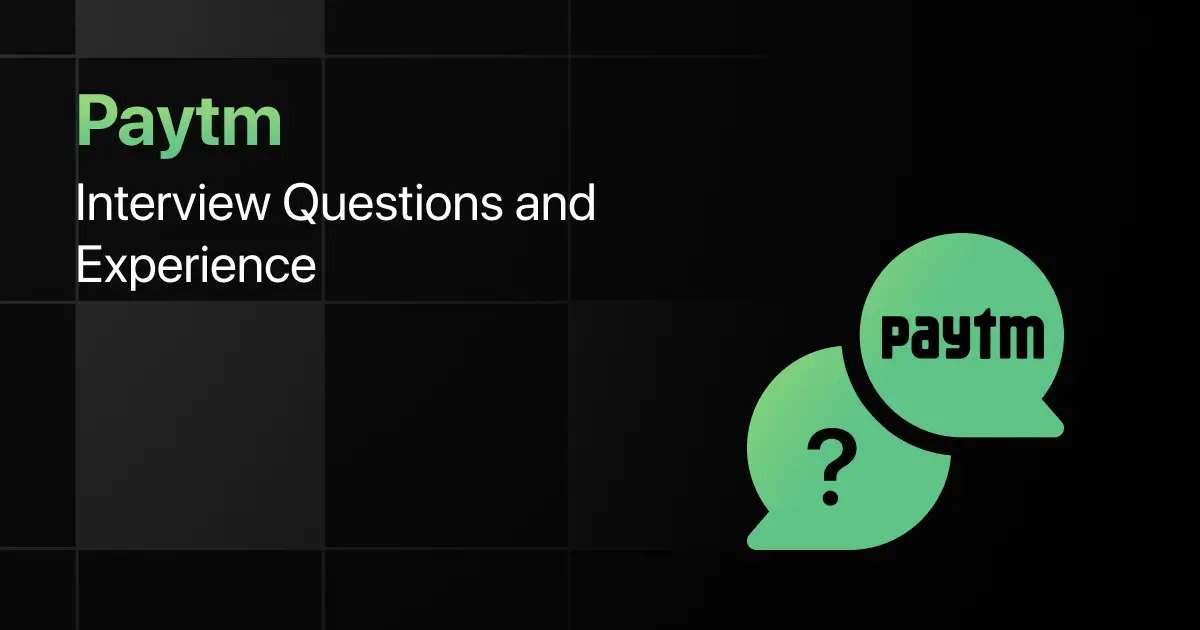

Paytm Interview Questions and Experience
Preparing for a Paytm interview requires a clear understanding of the company’s hiring process, the type of questions asked, and …
Warning: Undefined variable $post_id in /var/www/wordpress/wp-content/themes/placementpreparation/template-parts/popup-zenlite.php on line 1050


